
Autumn is spectacular season, full of pumpkin pies, apple fritters and quince cheese.
It also happens to be full of nuts. At this very moment, walnuts upon walnuts are falling to the ground with the help of strong mid-autumn winds.
If you have a mature walnut growing in your backyard, consider yourself lucky. And if a neighbor is offering to let you pick theirs, go for it and harvest as much as you can fit in your baskets and buckets.
The time to collect them is now – just remember to leave some for the birds and the squirrels!
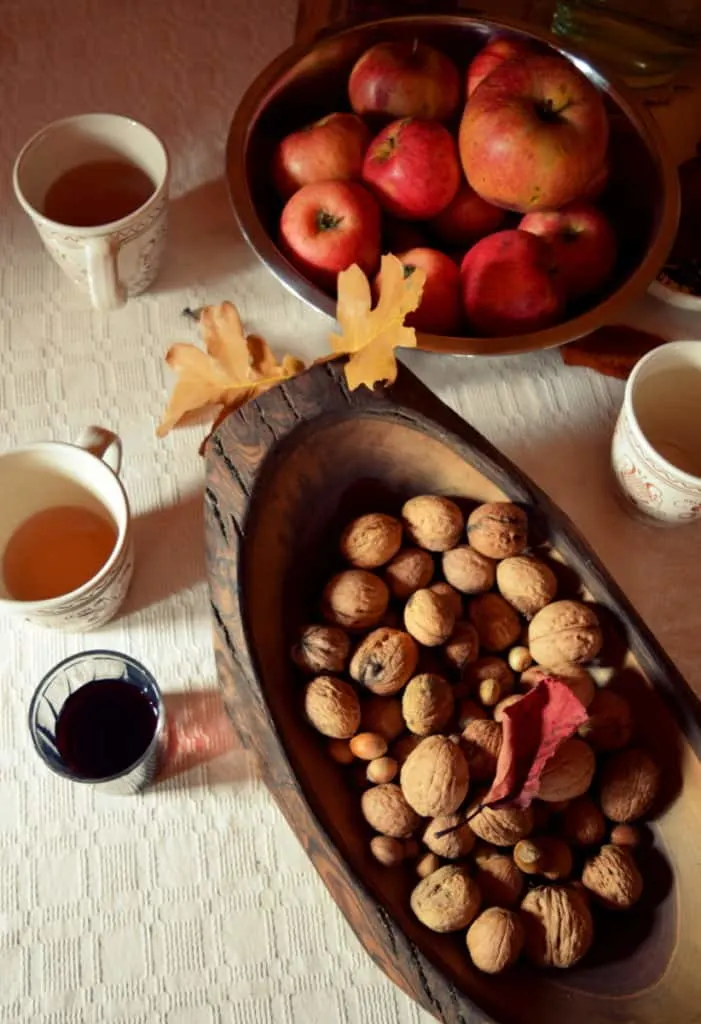
English vs. Black Walnut
Black walnuts are native to America, and they have a thicker shell and a more potent flavor than the milder English ones.
The hull is often used to make an anti-bacterial black walnut tincture, as well as being a key ingredient in making homemade black walnut ink.
If you are curiously interested in self-reliance, the ability to make your own ink for writing and drawing is one to behold – it looks beautiful on handwritten gift tags and canning labels too!
English walnuts have a thinner shell that is easy to crack, even without a nutcracker. Out in the field you can smash it between two stones to get the nutmeat out, or knock two against each other. It’s all a matter of how hungry you are.
Walnuts are beneficial for so many reasons – and when healthy food is free for the harvesting, go and stock up!
English walnuts are full of nutritious fats, fiber, minerals and vitamins that support a nature-based lifestyle.
Walnuts are also:
- Rich in antioxidants
- An amazing source of heart-healthy omega-3s
- Anti-inflammatory
- Promoting gut health
- Supporting brain function
Perhaps one of the best things about walnuts is that they will appear year after year, with little input from you.
When are walnuts ready for harvesting?
Depending on where you live, the leaves of the walnut tree may already be turning yellow as they begin to drop their delicious nuts.
From early September to early November is the typical range of walnut harvesting – when the kernels are light in color and they begin to separate from their shells.
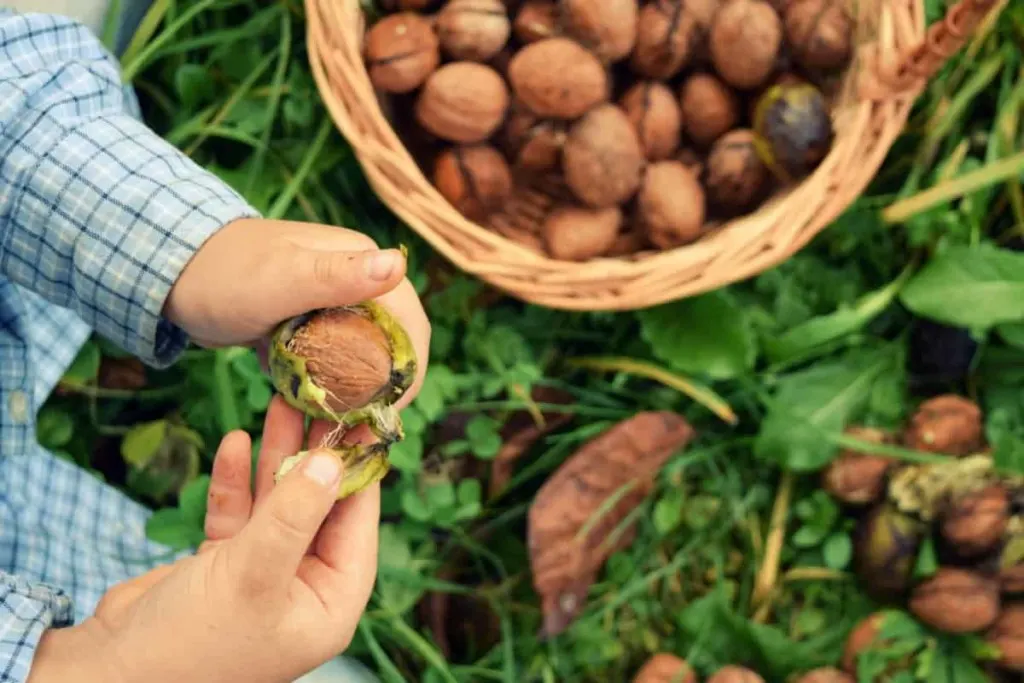
Collecting walnuts
Ordinarily, the wind is the most helpful factor in sending walnuts to the ground, ready for picking by hand.
In the absence of wind, however, you may need a long pole, even combined with a hook, to reach the upper branches. In this case you will need to shake them loose yourself.
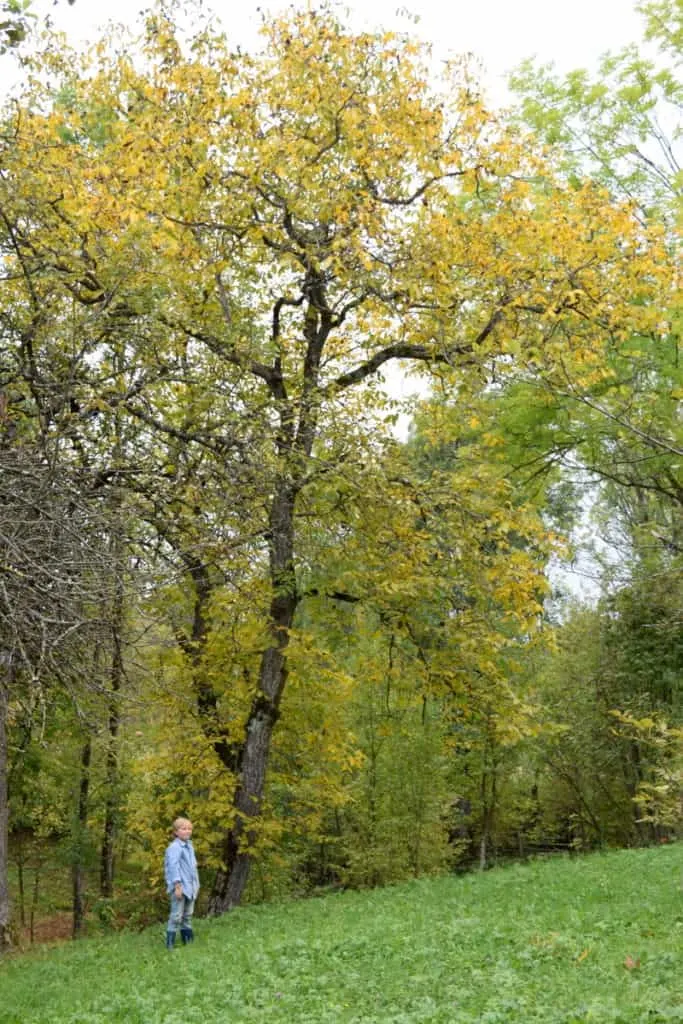
Keep in mind that walnut trees can grow to enormous proportions, and it is not uncommon for a tree to reach 80, even 100 feet!
Not to mention the fact that walnuts spread their branches outwards, covering quite a bit of ground, as much as 50 feet across.
One other thing to remember when collecting walnuts: don’t leave walnuts sitting on the ground for too long. You’ll want to remove the outer green hull as soon as possible (if it hasn’t already come off naturally on its own).
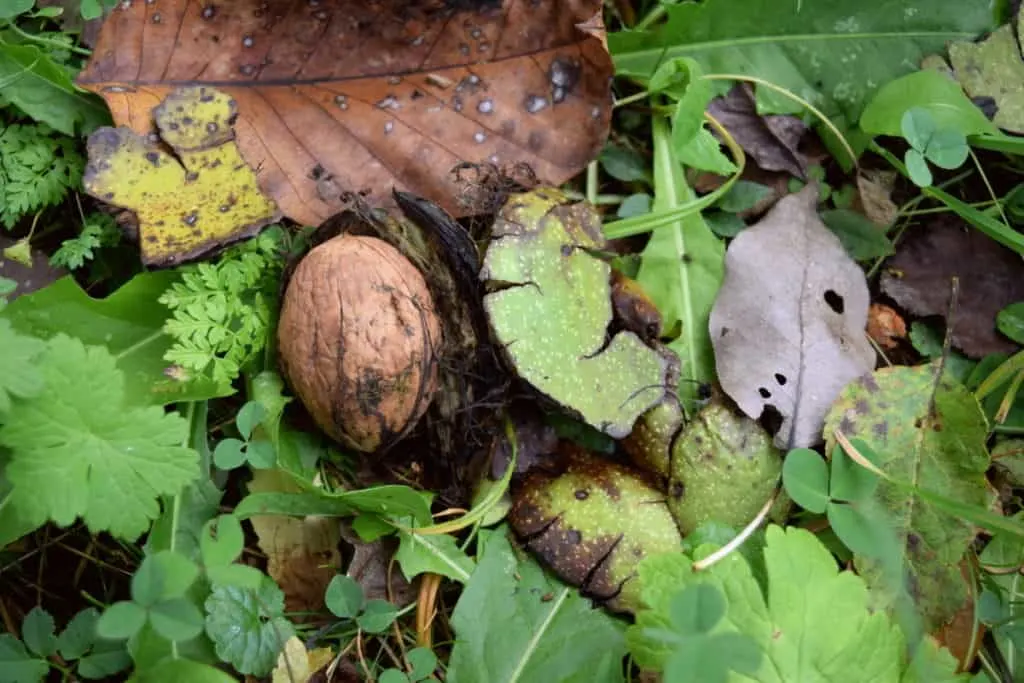
When left on the soil/grass for too long, they are susceptible to mold during rainy and damp weather. Ants and other critters may also be interested in the fallen “fruit”.
If you are concerned about staining your hands, simply wear rubber gloves to protect against brown stains and skin irritations.
After harvesting, it is often suggested to wash the nuts and remove all dirt.
Only do this if they are very dirty. Once they are fully dry, you can wipe them with a thick towel and call it a day.
More than one way to dry walnuts
The ability to dry your walnuts depends on the humidity, just as much as it does on the temperature.
There is no right or wrong way to go about this.
You can dry them outside on the ground in a single layer, so long as the sun is shining and nighttime temperatures are agreeable, though you may need to cover them with a plastic net to deter walnut scavenging birds.
If you have space in your greenhouse, you could dry them inside on a table or screen.
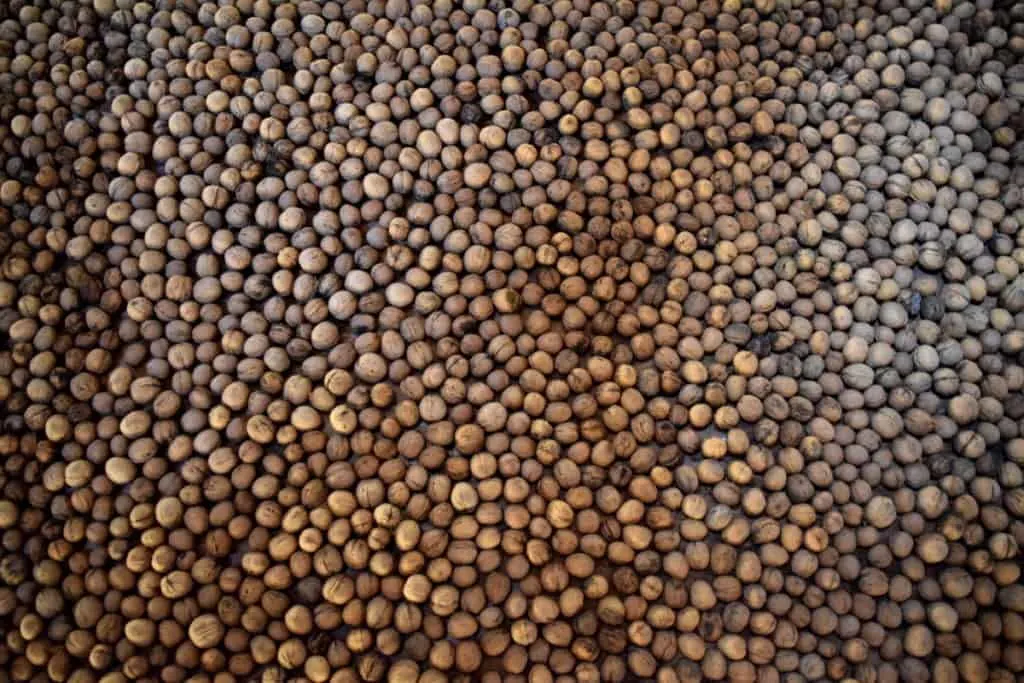
Alternatively, your attic, garage, porch or any clean, semi-outdoor space is ideal.
Point is to keep excess moisture off and stir them often to promote drying.
In perfect circumstances, a week of drying should suffice. Just to be sure, go ahead and give them two weeks before storing in a breathable sack.
Testing for dryness
At first, fresh walnuts will be very moist and tight in their shells. The texture crisp and rubbery. With time the flavor will mellow, and become the walnut you know and love.
You may need to let your hand-harvested walnuts sit for a month or so to let them dry out further. This is a matter of personal preference.
How long can you store walnuts?
Once you properly dry out your batch of walnuts, big or small, now you can move onto storage options.
The easiest and most efficient way of storing walnuts is in their shells. This does take space – if you have it, use it!
Be forewarned, it is not as simple as tossing them in a bag in the back of a closet and forgetting about it till walnut cookies are in season.
Refrain from storing them in plastic bags, and opt for a not so densely woven cloth instead. You can sew it yourself from cotton, hemp or linen and reuse it season after walnut season.
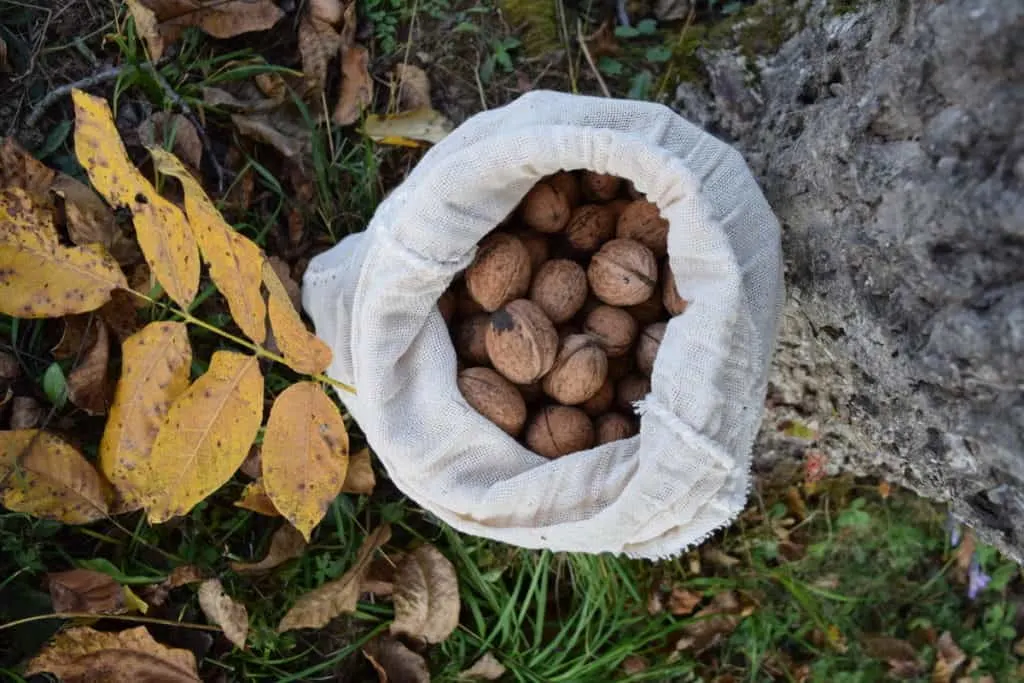
You’ll also want to store them in a protected (cool and dry) place, such as an attic. That being said, walnuts in their shells can keep for 3 years! Their hard shell is the best barrier against moisture and mold.
Storing unshelled walnuts
Walnuts cracked too soon, will become rancid much faster than their shelled counterparts. Generally it is wise to wait with cracking them until you are ready to use them, though sometimes you will want a snack that is ready to eat right now.
Moisture in the air, light and high temperatures will all reduce the shelf life of shelled walnuts. The way to extend the life of your walnuts is to refrigerate or freeze them.
- Walnut kernels can be stored in the fridge up to 6 months
- Walnut kernels can be frozen for up to a year
- Walnuts in their shells can last up to 3 years
For unshelled walnuts, you will need to store them in an air-tight container, as they readily take on other odors, which may make them taste less walnut-y.
Store-bought nuts will pale by comparison in flavor, so look down at the ground and pick up a few nuts each and every time you go out on a walk.
In no time at all, your basket will be full, ready for healthy winter snacking.
How to use up your walnut stash
In order to access all that carefully harvested and dried nutmeat, you had better invest in a good nutcracker to make the extraction process the most pleasurable possible.
You can’t go more low-tech than a wooden nutcracker “mushroom”. This is what we have used for cracking thousands of walnuts (last year we harvested 225 kilos/500 pounds) – and it is still going strong!
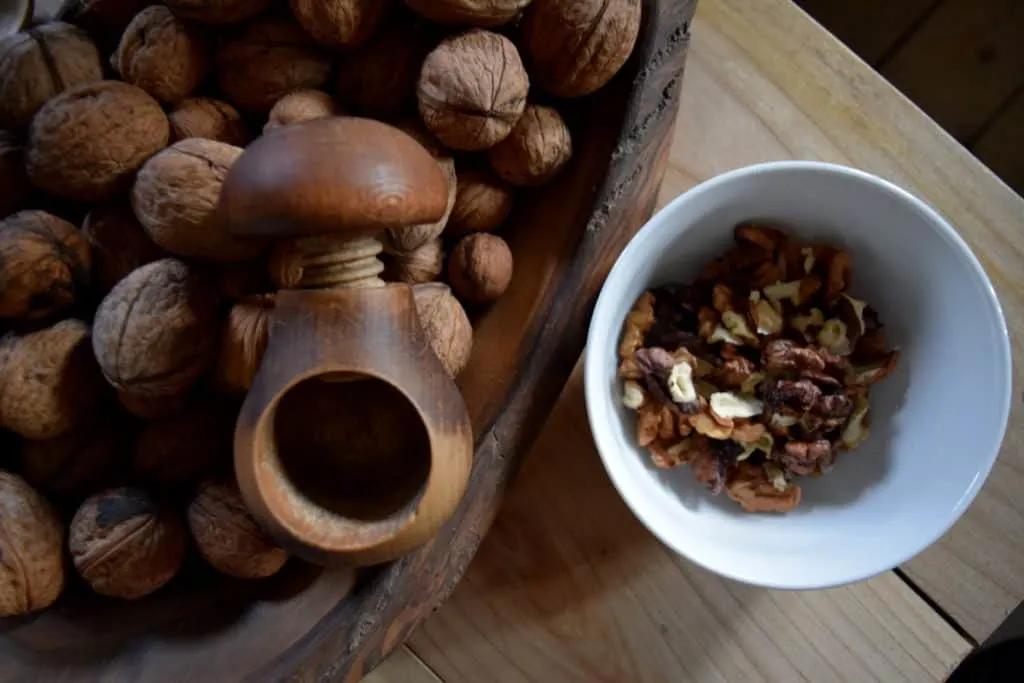
The benefits of this mushroom nutcracker?
- No pinched fingers
- Easy on the hands
- Little to no mess when you cover the opening with your other hand
- Child-friendly (kids can help crack nuts safely too!)
- Decorative and highly functional
Try it for yourself. It’s available on Amazon here.
Recipes for walnut pastries are aplenty, just be careful not to go overboard with delicious sweetness.
You can also try walnuts:
- Served with yogurt or fruit salad
- Finely ground in dips, sauces and meatballs
- Crushed as a coating for baked fish or chicken
- Added to pasta dishes and stir-fries
- Roasted and tossed into a trail mix
- Roughly chopped and added to a beet salad
Don’t forget that walnut oil can be pressed at home too.
And next spring, be sure to save some of the most beautiful walnut leaves. They are perfect for making a natural brown dye.
Here are six reasons to gather up some walnut leaves.
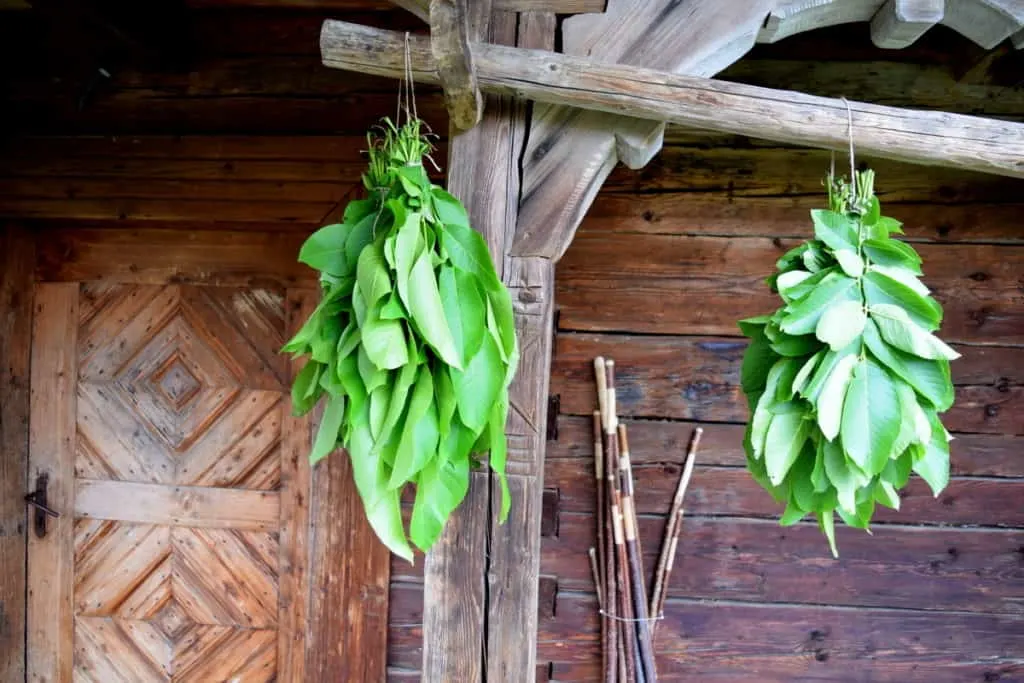
One homestead skill not to miss out on is how to air dry herbs. It is a practical, useful and necessary ability to master, and it will come in handy when you must save walnut leaves for both tea and herbal hair rinses.
If walnuts are falling near you, go out and harvest as much as you are prepared to eat and store – knowing that store-bought walnuts will cost you so much more.
While you are at it, don’t forget to preserve a jar (or two!) of walnuts in raw honey, for bountiful health all winter long.

Get the famous Rural Sprout newsletter delivered to your inbox.
Including Sunday ramblings from our editor, Tracey, as well as “What’s Up Wednesday” our roundup of what’s in season and new article updates and alerts.

